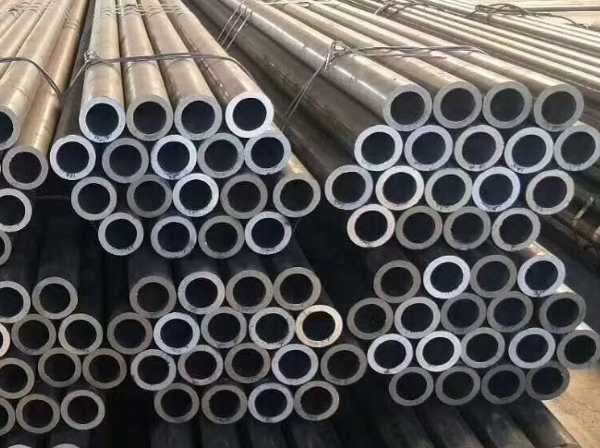
Definition and characteristics of delamination defects:
Delamination is a layered separation phenomenon parallel to the tube wall inside a seamless steel tube, usually caused by non-metallic inclusions, pores, shrinkage residuals or improper rolling process.
Its characteristics include:
Macroscopic manifestation: layered cracking on the cross section, abnormal reflection waves during ultrasonic testing.
Microscopic manifestation: inclusion aggregation, banded structure segregation or hydrogen-induced cracking.

The main causes of delamination defects in structural seamless steel tubes:
From the perspective of mechanism, it is generally believed that non-metallic inclusions in the tube blank will destroy the continuity and compactness of the 16mn structural seamless steel tube, and serious inclusions may even cause delamination inside the 16mn structural seamless steel tube. The other is considered to be hydrogen-induced cracking, that is, due to the accumulation of hydrogen in the steel, the partial pressure of the gas inside the metal is too high, white spots are formed in the round tube billet, and the cracks expand during the rolling process, eventually forming delamination defects. In addition, the stress generated by the uneven deformation of the two-roll cross-rolling piercing exceeds the plastic strength and will also cause delamination.
The roll speed is a key parameter of the piercing process. During the change of the roll speed from low to high, there is a critical roll speed at which stratification begins to appear. When the roll speed is low, the tube billet is easy to form cavities; when the roll speed is high, the tube billet and 16mn structural steel pipe are easy to form delamination defects. In order to eliminate the delamination defects of the tube blank and 16mn structural steel pipe, the roll speed should be reduced below the critical roll speed at which delamination begins to appear.
Hazards of delamination defects:
1. Decreased mechanical properties
Tensile strength in delamination area is reduced by 30%~50%, and impact toughness (Charpy V-notch) may drop to below 10J.
2. Processing failure risk
Cold bending and expansion are prone to cracking from the delamination (such as hydraulic cylinder processing burst).
3. Safety hazards
Delamination in pressure pipes may develop into fatigue cracks, causing leakage or pipe burst (such as oil pipelines).
Control measures for delamination defects:
1. Metallurgical quality control
Raw material optimization:
Low sulfur and phosphorus clean steel is used, and calcium treatment (Ca/S≥1.5) converts Al₂O₃ into spherical calcium aluminate.
Continuous casting process:
Electromagnetic stirring reduces center segregation and controls the drawing speed to avoid shrinkage.
2. Rolling process improvement
Heating system:
The temperature of the soaking section is 1200~1250℃, and the holding time is ≥2 hours/ton of steel billet (to ensure the melting of inclusions).
Rolling parameters:
Compression ratio ≥8:1 (such as Φ300mm billet rolled to Φ100mm tube), ensure the welding of center defects.
Multi-pass rolling (such as 3-roll Assel rolling mill) is used to avoid excessive deformation in a single pass.
3. Heat treatment and testing
Dehydrogenation annealing:
Anneal high-risk steel pipes at 250~300℃×24h to diffuse hydrogen to <1.5ppm.
Non-destructive testing:
Ultrasonic flaw detection (UT): detect delamination with a depth of ≥5mm.
Magnetic particle testing (MT): used for surface near-layer defect detection.
4. Production process monitoring
Online monitoring: real-time feedback of rolling force and temperature data, dynamic adjustment of process.
Metallographic analysis: regular spot check of steel pipe cross-section to evaluate inclusion distribution (rated according to ASTM E45).
Repair and treatment of delamination defects:
Minor delamination: grinding to remove the defective layer (remaining wall thickness ≥90% of the standard lower limit).
Severe delamination: directly scrapped (for example, API 5CT stipulates that if the delamination depth is greater than 5% of the wall thickness, the product will be scrapped).
Read more: Seamless Tube Production Equipment or How to Demagnetize Carbon Steel Pipe?
